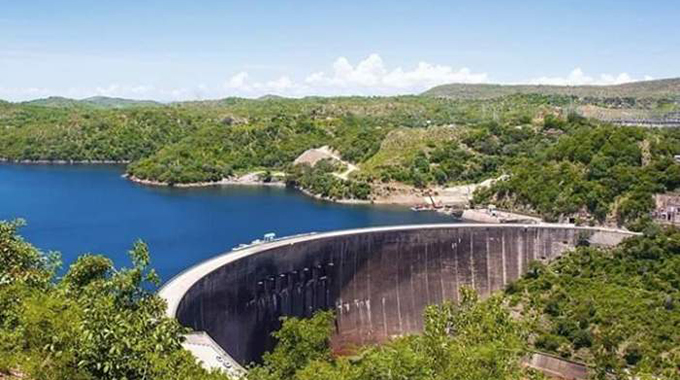
The Zambezi River Authority (ZRA) has further reduced the allocation of water for power generation at Kariba hydro-power station for 2020, which will result in suppressed electricity supplies from the power station.
At least 22 billion cubic metres have been allocated for power generation at the Kariba South and North power stations, which are currently providing over 50 percent of power needs in Zimbabwe and Zambia, respectively.
Lake Kariba has a capacity of 180,6 billion cubic metres of water and of that, 65 billion cubic metres can be used for power generation.
Average yearly inflows are around 40 billion cubic metres, but only 18,84 billion cubic metres of water flowed into Lake Kariba in 2019.
The 2020 allocation is in response to reduced inflows into the lake owing to successive droughts.
According to ZRA, reduction of water allocation means reduced outflow from the turbines during power generation, while allowing the lake to fill up.
Permutations are that with average power generation of around 550MW at a volume cap of 22 billion cubic metres of water, it would take three years for the lake to fill up to maximum retention levels with average inflows.
Speaking at a media briefing in Zambia over the weekend, ZRA chief executive Engineer Munyaradzi Munodawafa said the move was based on the Southern Africa Regional Climate Outlook Forum of the SADC Climate Services Centre.
“Based on this forecast, the authority (ZRA) allocated 22 billion cubic metres for power generation at Kariba for the period January to December 2020,” he said.
To date, the lake has received inflows of 3,15 billion cubic metres, which compares favourably against inflows of 1,7 billion cubic metres received during the same period in 2019.
Water is flowing into the lake at an average of 663 cubic metres per second compared to the long term average of 931 cubic metres per second.
Eng Munodawafa said lake levels dropped by one centimetre following increased turbine outflows in the last three days.
He said ZRA would be giving out status updates fortnightly to ensure that people have an appreciation of the impact of depressed rainfall on power generation.
The authority, he said, relied on data gathered at 13 stations in the Kariba catchment area, with Victoria Falls and Chavuma stations providing key performance indicators of the Zambezi River which contributes 75 percent of flows into the lake.
Flows at Victoria Falls have continued to rise by about 25 percent since last year’s readings.
“The flows in the Zambezi River at Chavuma shot up by 73 cubic metres per second between the 5th and 6th February, indicating intense run-off on the Zambezi headwaters,” said Eng Munodawafa.
“The flow is still soaring above the long term average by 41 percent and last year’s flows by 189 percent. The flows have also far exceeded those of 2014/15 at this time, giving a ray of hope for better run-off at this station this year than both last year and 2014/15.”
Flows at Victoria Falls are expected to also rise by the end of this month because of a four-week time lag between upstream Chavuma station and Victoria Falls.
Although inflows are comparatively increasing, they are still within the range of the third worst year on record.
Eng Munodawafa said improved power generation was tied to improved water inflows and consequently lake levels.
The total outflow for 2019, including turbine discharge (36,02 billion cubic metres) and evaporation (9,79 billion cubic metres), was 45,81 billion cubic metres.
Eng Munodawafa said the relatively high inflows upstream of the Zambezi River could not result in high lake levels because it is absorbed by the Barotse and Chobe flood plains.
“With the lower catchment continuing to be practically dry since mid-January 2020, and Victoria Falls flows marking up rather sluggishly, turbine outflows continue to command the Lake level situation at Kariba,” he said.
“The relatively high flows monitored on the Upper Zambezi Catchment remain heavily weakened by the rather thirsty Barotse and Chobe flood plains, resulting in the paltry daily increments of about 6 to 12 billion cubic metres per second per day at Victoria Falls.”
Zimbabwe and Zambia have had to introduce load shedding and rely on imports to meet electricity demand.
Kariba South Power station was recently upgraded to churn out 1 050MW of electricity, which makes up about half of the country’s daily electricity needs.
